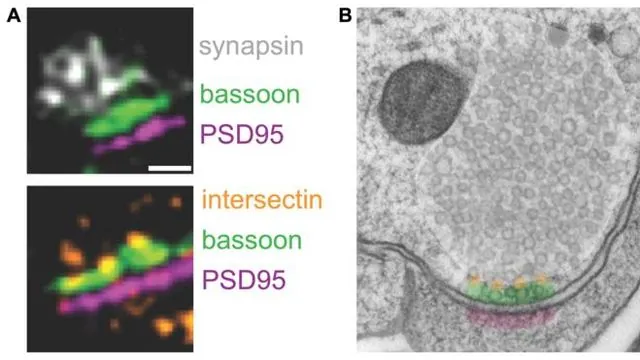
Unlocking the Brain's Secrets: How a Special Protein Controls Communication Between Neurons
2025-07-31
Author: John Tan
Groundbreaking Discovery in Brain Communication
Researchers at Johns Hopkins Medicine have made an astonishing breakthrough in understanding how brain cells communicate. Their study, conducted with genetically engineered mice, reveals the unexpected role of a protein called intersectin in orchestrating the timing and location of neuronal signals.
A Key to Memory and Learning
This revelation holds significant implications for our understanding of memory formation and learning processes in the mammalian brain. The insights gained from this study could pave the way for new treatments for cognitive disorders such as Down syndrome, Alzheimer’s disease, and Huntington’s disease.
The Unique Function of Intersectin
Published on July 8 in the journal *Nature Neuroscience*, the research shows that intersectin acts like a gatekeeper, keeping tiny vesicles—carriers of vital information—precisely positioned within brain cells until they are needed. This separation is reminiscent of how oil sits atop water, illustrating the protein's critical role in brain communication.
Synaptic Vesicles: The Brain's Messengers
Synaptic vesicles, small bubbles within synapses—the junctions between neurons—are essential for passing messages from one brain cell to another. Typically, there are around 300 of these vesicles clustered at synapses, but only a select few are utilized during communication. Understanding how the brain selects the right vesicles has long been a focus for scientists.
Revolutionizing Our Understanding of Neuronal Processes
Dr. Shigeki Watanabe, who led the study, emphasizes the discovery that these vesicles have specific preferred locations within synapses. By maintaining their positions, the brain can effectively manage their use during processing and thinking. Watanabe's team initially studied endocytosis—how brain cells recycle vesicles after their use—only to find that removing intersectin didn’t prevent this recycling.
A Closer Look: The Role of Intersectin
Further investigation revealed that intersectin is strategically located between communicating vesicles and those that are inactive, effectively segregating them. Researchers utilized advanced microscopy techniques to examine vesicle activity at the nanoscale.
Implications for Rapid Communication
A unique zap and freeze microscopy method allowed scientists to observe vesicle fusion with the neuron's membrane. They discovered that in normal mice, vesicles could merge within milliseconds. However, in genetically modified mice lacking intersectin or an associated protein, the replenishment of vesicles at communication sites was severely hindered.
The Future of Neuroscience Research
As Dr. Watanabe and his colleagues look ahead, their goal is to uncover exactly how intersectin facilitates the movement of new vesicles to where they are needed most. This research not only enhances our understanding of brain signaling but also may lead to innovative approaches to treat various cognitive impairments.


 Brasil (PT)
Brasil (PT)
 Canada (EN)
Canada (EN)
 Chile (ES)
Chile (ES)
 Česko (CS)
Česko (CS)
 대한민국 (KO)
대한민국 (KO)
 España (ES)
España (ES)
 France (FR)
France (FR)
 Hong Kong (EN)
Hong Kong (EN)
 Italia (IT)
Italia (IT)
 日本 (JA)
日本 (JA)
 Magyarország (HU)
Magyarország (HU)
 Norge (NO)
Norge (NO)
 Polska (PL)
Polska (PL)
 Schweiz (DE)
Schweiz (DE)
 Singapore (EN)
Singapore (EN)
 Sverige (SV)
Sverige (SV)
 Suomi (FI)
Suomi (FI)
 Türkiye (TR)
Türkiye (TR)
 الإمارات العربية المتحدة (AR)
الإمارات العربية المتحدة (AR)